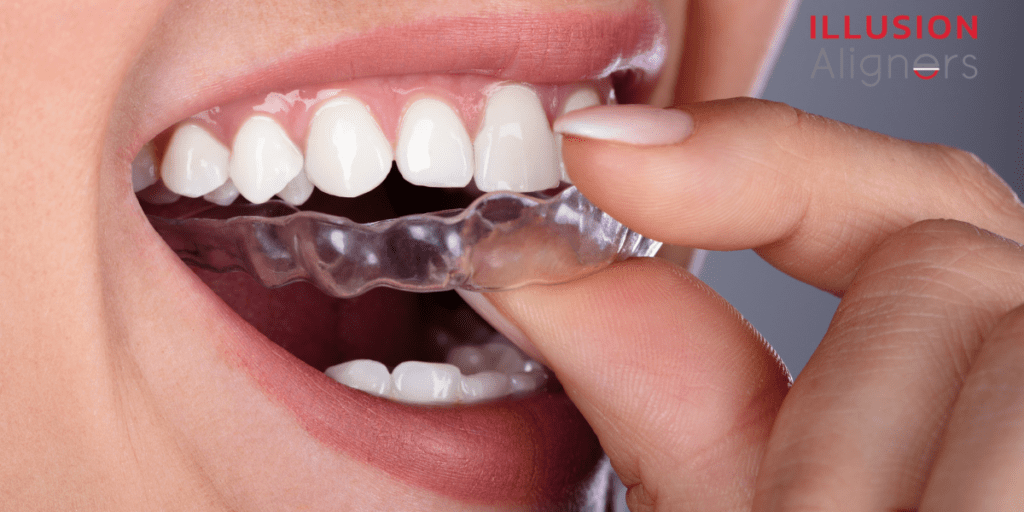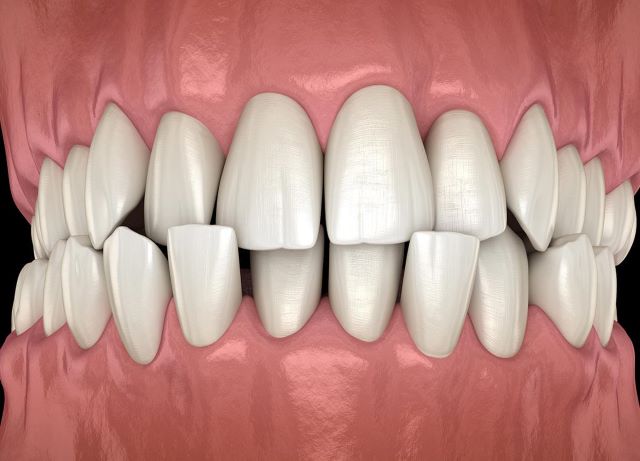The appearance of one’s smile, one’s confidence, and bite-related issues can all be negatively impacted by having a crooked, bad bite. The type of dental malocclusion cases influences the ability to chew as well. However, there are numerous treatment options accessible in dentistry to address dental-related issues, and orthodontic treatments are remarkably suggested in cases of malocclusion. Likewise, clear aligners are the most decisive and well-liked option among the several orthodontic procedures for teenagers and adults.
Various dental issues may develop based on the type and intensity of the malocclusion. Only a skilled dentist can indicate that a dental issue can be resolved using clear aligners. Clear aligners are the best alternative to traditional braces for problems related to crooked or bad bites. Therefore, treatable cases of malocclusion can be corrected using invisible aligners, providing people with a perfect bite and gorgeous-looking smile.
Fortunately, Invisalign can only treat four different types of malocclusion. Therefore, we will discover how to fix malocclusions in all circumstances in this article with clear aligners. Continue reading to learn more.
Which Four Different Malocclusion Cases Can Be Corrected With Clear Aligners?
- Open Bite
The absence of any contact between the top and bottom jaws results in an open bite. There is a space between the top and bottom teeth when there is an open bite. Biting and chewing are challenging, as you can undoubtedly anticipate. Therefore, malocclusion can be corrected and treated using clear aligners, and your dentist can use open bite treatment to provide you with a proper bite.
- Cross Bite
When the lower and upper arches are laterally misaligned, a crossbite can happen, a malocclusion condition where the top and bottom jaws do not connect up correctly. It is typically identified by the fact that parts of the upper front teeth are positioned within the lower front teeth.
As a result of their potential to result in serious problems, including gum recession, bone loss, or broken or chipped teeth, crossbites almost always necessitate orthodontic treatment. Clear aligners can effectively address specific forms of crossbites, while other forms may call for a better approach.
- Under Bite
An underbite, sometimes called prognathism, is a form of malocclusion that is essentially an overbite turned the other way around. Since the lower jaw is positioned excessively forward, an underbite causes the lower front teeth to intersect the top front teeth. However, underbites are categorized as a class three malocclusion.
In addition to wearing down the teeth, they usually impede the ability to chew and talk clearly. Dental professionals advise orthodontic treatment to correct an underbite for such causes. Although orthodontics can correct underbites, more severe cases can additionally need surgery in addition to dental aligners.
- Over Bite
Most dental patients with malocclusion have an overbite, also known as a deep bite, defined as the top front teeth overlapping the bottom front teeth by more than a quarter of a hundred percent. There is a common condition called class one malocclusion, where there is a slight overbite. However, some situations—known as class two malocclusion or retrognathism—require corrective action to avoid further jaw clenching/pain and early tooth deterioration.
How does the Clear Aligner Treatment for Malocclusion Work?
Class I and II malocclusion instances respond well to clear aligner treatment, allowing patients concerned about their bite to get it corrected through orthodontic therapy. As the alignment method necessitates modest tooth adjustments, they are helpful for the repair of mild to severe dental misalignment issues.
Clear aligners may not provide the significant degree of tooth lineup or angular mobility needed for complex dental conditions under the class III malocclusion classification. However, clear aligners and transparent braces assert that even class III malocclusions can be treated thanks to their advanced software, premium raw materials, and sophisticated technology.
Furthermore, the invisible aligners will use a single mechanism of steady, persistent pressure to shift teeth to the desired degree, regardless of how severe the dental ailment is—mild, moderate, or complex. An invasive dental malocclusion issue will require more time for treatment than a case with minor to moderate dental situations, so think about that as well while considering teeth-straightening options.
At various points during the treatment process, the patient receives various sets of clear aligners, beginning with a pair of the initial aligners. The only factor to bear is that using invisible aligners alone won’t accurately finish the teeth-alignment process.

Final Thoughts
Subsequently, clear aligners can address four other malocclusion cases, notably open bites, crossbites, overbites, and underbites, in addition to straightening teeth. The outcome is a beautiful and functional smile, allowing you to live a life free of dental issues and with healthier teeth. Malocclusion correction also lowers the possibility of future dental problems. However, if you want to discover what aligner therapy would offer the finest results, you should consider going to Signature Smiles. They offer a staff of dental specialists, advanced equipment, and tools to provide you with a perfect-looking mouth and bite. Do yourself a favor and treat yourself to the dental care services you require and desire today!

As the editor of the blog, She curate insightful content that sparks curiosity and fosters learning. With a passion for storytelling and a keen eye for detail, she strive to bring diverse perspectives and engaging narratives to readers, ensuring every piece informs, inspires, and enriches.
![Business Ideas in Bhopal [Best Business in Bhopal] bhopal](https://www.justgetblogging.com/wp-content/uploads/2025/01/bhopal-150x150.jpg)









